Opinion & Analysis
Elliott: The “distance debate” – Why course setup, not ball rollback, is golf’s answer
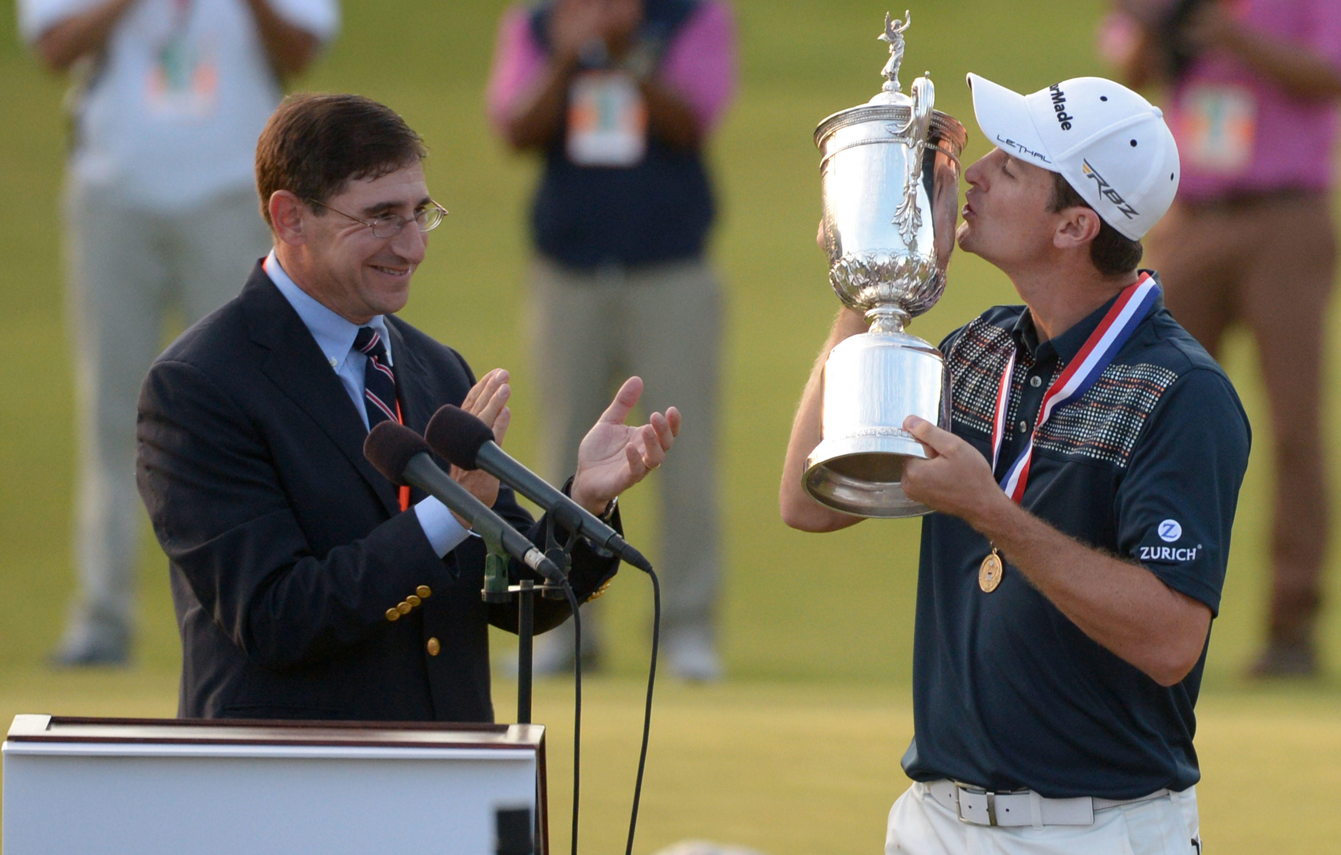
In the ongoing saga of golf’s “distance problem,” the powers that be have decided that rolling back the golf ball is the solution. New regulations will limit how far the ball can travel in 2028 for professionals and 2030 for recreational players. But this broad-sweeping approach misses a simpler, more elegant solution that’s been hiding in plain sight: strategic course setup.
The obsession with lengthening courses to combat technology has created a one-dimensional arms race. Yet, history shows us that length alone doesn’t determine a championship test. Look no further than the 2013 U.S. Open at Merion Golf Club, where Justin Rose claimed victory with a 72-hole total of one-over-par. The tenth-place finisher was seven-over-par. The remarkable part? Merion played under 7,000 yards.
This wasn’t some anomaly from the distant past. In 2013, PGA Tour players averaged 288 yards off the tee, compared to today’s approximately 300 yards—a mere 12-yard difference. I’m confident that Merion’s 2013 setup would still thoroughly challenge today’s power players.
What made Merion so formidable wasn’t excessive length but thoughtful course management. The USGA employed several tactical elements: narrow fairways that demanded precision off the tee, punishing rough that extracted a severe penalty for wayward drives, smaller greens that rewarded accurate approach shots, and strategic pin placements that required both skill and patience.
These setup choices created a championship test that rewarded complete players, not just long hitters. The course didn’t need to be 7,500 yards to identify the best golfer that week. It needed to challenge every aspect of the game—driving accuracy, iron play, short game, putting, and perhaps most importantly, course management and mental fortitude.

The current rollback solution feels like using a sledgehammer when a scalpel would do. It’s particularly puzzling when you consider who this rule actually affects. According to recent data, the average amateur male golfer drives the ball about 216 yards, while the average female golfer manages around 148 yards. These recreational players—the vast majority of golfers worldwide—aren’t creating a “distance problem” that needs solving.
Instead of fundamentally altering equipment for everyone, why not embrace the tools already at our disposal? Tournament committees have tremendous flexibility in how they prepare courses. Growing the rough an extra inch, narrowing fairways by five yards in landing areas, reducing green sizes, adjusting green speeds, and placing pins in challenging locations can collectively create a robust test without adding a single yard to the scorecard.
This approach offers several advantages. First, it’s adaptable—the setup can be tailored to each venue’s unique characteristics. Second, it preserves the game’s traditions while acknowledging modern capabilities. Third, it creates more interesting strategic decisions for players rather than simply rewarding those who hit it farthest.
The beauty of golf has always been its variety. Some courses reward length, others precision. Some test your iron play, others your short game. By focusing exclusively on containing distance through equipment rollbacks, we risk homogenizing the game and diminishing what makes it unique.
The 2013 Merion championship reminds us that a great golf course doesn’t need excessive length to challenge the world’s best. It requires a thoughtful setup that examines every aspect of a player’s game. As we debate golf’s future, perhaps we should look to its past for wisdom. The answer to the distance debate might not be in changing the ball but in how we set up the battlefield.
Reader, please support me by checking out my three weekly columns on RG.org. On Mondays, I present “The Starter,” which recaps the week gone by in golf. On Thursdays, I give you “Fairway Focus,” which previews the week to come in golf. And on Saturdays, I dish up the “Weekend Fore-cast,” a look at what’s on tap for the upcoming weekend.
Editor’s note: “My Take” will be an ongoing weekly series where Brendon shares his thoughts and opinions on various aspects of the game and industry. These are Brendon’s opinions and do not necessarily reflect those of GolfWRX, its staff, and its affiliates.
Opinion & Analysis
The 2 primary challenges golf equipment companies face

As the editor-in-chief of this website and an observer of the GolfWRX forums and other online golf equipment discourse for over a decade, I’m pretty well attuned to the grunts and grumbles of a significant portion of the golf equipment purchasing spectrum. And before you accuse me of lording above all in some digital ivory tower, I’d like to offer that I worked at golf courses (public and private) for years prior to picking up my pen, so I’m well-versed in the non-degenerate golf equipment consumers out there. I touched (green)grass (retail)!
Complaints about the ills of and related to the OEMs usually follow some version of: Product cycles are too short for real innovation, tour equipment isn’t the same as retail (which is largely not true, by the way), too much is invested in marketing and not enough in R&D, top staffer X hasn’t even put the new driver in play, so it’s obviously not superior to the previous generation, prices are too high, and on and on.
Without digging into the merits of any of these claims, which I believe are mostly red herrings, I’d like to bring into view of our rangefinder what I believe to be the two primary difficulties golf equipment companies face.
One: As Terry Koehler, back when he was the CEO of Ben Hogan, told me at the time of the Ft Worth irons launch, if you can’t regularly hit the golf ball in a coin-sized area in the middle of the face, there’s not a ton that iron technology can do for you. Now, this is less true now with respect to irons than when he said it, and is less and less true by degrees as the clubs get larger (utilities, fairways, hybrids, drivers), but there remains a great deal of golf equipment truth in that statement. Think about it — which is to say, in TL;DR fashion, get lessons from a qualified instructor who will teach you about the fundamentals of repeatable impact and how the golf swing works, not just offer band-aid fixes. If you can’t repeatably deliver the golf club to the golf ball in something resembling the manner it was designed for, how can you expect to be getting the most out of the club — put another way, the maximum value from your investment?
Similarly, game improvement equipment can only improve your game if you game it. In other words, get fit for the clubs you ought to be playing rather than filling the bag with the ones you wish you could hit or used to be able to hit. Of course, don’t do this if you don’t care about performance and just want to hit a forged blade while playing off an 18 handicap. That’s absolutely fine. There were plenty of members in clubs back in the day playing Hogan Apex or Mizuno MP-32 irons who had no business doing so from a ballstriking standpoint, but they enjoyed their look, feel, and complementary qualities to their Gatsby hats and cashmere sweaters. Do what brings you a measure of joy in this maddening game.
Now, the second issue. This is not a plea for non-conforming equipment; rather, it is a statement of fact. USGA/R&A limits on every facet of golf equipment are detrimental to golf equipment manufacturers. Sure, you know this, but do you think about it as it applies to almost every element of equipment? A 500cc driver would be inherently more forgiving than a 460cc, as one with a COR measurement in excess of 0.83. 50-inch shafts. Box grooves. And on and on.
Would fewer regulations be objectively bad for the game? Would this erode its soul? Fortunately, that’s beside the point of this exercise, which is merely to point out the facts. The fact, in this case, is that equipment restrictions and regulations are the slaughterbench of an abundance of innovation in the golf equipment space. Is this for the best? Well, now I’ve asked the question twice and might as well give a partial response, I guess my answer to that would be, “It depends on what type of golf you’re playing and who you’re playing it with.”
For my part, I don’t mind embarrassing myself with vintage blades and persimmons chasing after the quasi-spiritual elevation of a well-struck shot, but that’s just me. Plenty of folks don’t give a damn if their grooves are conforming. Plenty of folks think the folks in Liberty Corner ought to add a prison to the museum for such offences. And those are just a few of the considerations for the amateur game — which doesn’t get inside the gallery ropes of the pro game…
Different strokes in the game of golf, in my humble opinion.
Anyway, I believe equipment company engineers are genuinely trying to build better equipment year over year. The marketing departments are trying to find ways to make this equipment appeal to the broadest segment of the golf market possible. All of this against (1) the backdrop of — at least for now — firm product cycles. And golfers who, with their ~15 average handicap (men), for the most part, are not striping the golf ball like Tiger in his prime and seem to have less and less time year over year to practice and improve. (2) Regulations that massively restrict what they’re able to do…
That’s the landscape as I see it and the real headwinds for golf equipment companies. No doubt, there’s more I haven’t considered, but I think the previous is a better — and better faith — point of departure when formulating any serious commentary on the golf equipment world than some of the more cynical and conspiratorial takes I hear.
Agree? Disagree? Think I’m worthy of an Adam Hadwin-esque security guard tackle? Let me know in the comments.
@golfoncbs The infamous Adam Hadwin tackle ? #golf #fyp #canada #pgatour #adamhadwin ? Ghibli-style nostalgic waltz – MaSssuguMusic
Podcasts
Fore Love of Golf: Introducing a new club concept

Episode #16 brings us Cliff McKinney. Cliff is the founder of Old Charlie Golf Club, a new club, and concept, to be built in the Florida panhandle. The model is quite interesting and aims to make great, private golf more affordable. We hope you enjoy the show!
Opinion & Analysis
On Scottie Scheffler wondering ‘What’s the point of winning?’

Last week, I came across a reel from BBC Sport on Instagram featuring Scottie Scheffler speaking to the media ahead of The Open at Royal Portrush. In it, he shared that he often wonders what the point is of wanting to win tournaments so badly — especially when he knows, deep down, that it doesn’t lead to a truly fulfilling life.
View this post on Instagram
“Is it great to be able to win tournaments and to accomplish the things I have in the game of golf? Yeah, it brings tears to my eyes just to think about it because I’ve literally worked my entire life to be good at this sport,” Scheffler said. “To have that kind of sense of accomplishment, I think, is a pretty cool feeling. To get to live out your dreams is very special, but at the end of the day, I’m not out here to inspire the next generation of golfers. I’m not out here to inspire someone to be the best player in the world, because what’s the point?”
Ironically — or perhaps perfectly — he went on to win the claret jug.
That question — what’s the point of winning? — cuts straight to the heart of the human journey.
As someone who’s spent over two decades in the trenches of professional golf, and in deep study of the mental, emotional, and spiritual dimensions of the game, I see Scottie’s inner conflict as a sign of soul evolution in motion.
I came to golf late. I wasn’t a junior standout or college All-American. At 27, I left a steady corporate job to see if I could be on the PGA Tour starting as a 14-handicap, average-length hitter. Over the years, my journey has been defined less by trophies and more by the relentless effort to navigate the deeply inequitable and gated system of professional golf — an effort that ultimately turned inward and helped me evolve as both a golfer and a person.
One perspective that helped me make sense of this inner dissonance around competition and our culture’s tendency to overvalue winning is the idea of soul evolution.
The University of Virginia’s Division of Perceptual Studies has done extensive research on reincarnation, and Netflix’s Surviving Death (Episode 6) explores the topic, too. Whether you take it literally or metaphorically, the idea that we’re on a long arc of growth — from beginner to sage elder — offers a profound perspective.
If you accept the premise literally, then terms like “young soul” and “old soul” start to hold meaning. However, even if we set the word “soul” aside, it’s easy to see that different levels of life experience produce different worldviews.
Newer souls — or people in earlier stages of their development — may be curious and kind but still lack discernment or depth. There is a naivety, and they don’t yet question as deeply, tending to see things in black and white, partly because certainty feels safer than confronting the unknown.
As we gain more experience, we begin to experiment. We test limits. We chase extreme external goals — sometimes at the expense of health, relationships, or inner peace — still operating from hunger, ambition, and the fragility of the ego.
It’s a necessary stage, but often a turbulent and unfulfilling one.
David Duval fell off the map after reaching World No. 1. Bubba Watson had his own “Is this it?” moment with his caddie, Ted Scott, after winning the Masters.
In Aaron Rodgers: Enigma, reflecting on his 2011 Super Bowl win, Rodgers said:
“Now I’ve accomplished the only thing that I really, really wanted to do in my life. Now what? I was like, ‘Did I aim at the wrong thing? Did I spend too much time thinking about stuff that ultimately doesn’t give you true happiness?’”
Jim Carrey once said, “I think everybody should get rich and famous and do everything they ever dreamed of so they can see that it’s not the answer.”
Eventually, though, something shifts.
We begin to see in shades of gray. Winning, dominating, accumulating—these pursuits lose their shine. The rewards feel more fleeting. Living in a constant state of fight-or-flight makes us feel alive, yes, but not happy and joyful.
Compassion begins to replace ambition. Love, presence, and gratitude become more fulfilling than status, profits, or trophies. We crave balance over burnout. Collaboration over competition. Meaning over metrics.
Interestingly, if we zoom out, we can apply this same model to nations and cultures. Countries, like people, have a collective “soul stage” made up of the individuals within them.
Take the United States, for example. I’d place it as a mid-level soul: highly competitive and deeply driven, but still learning emotional maturity. Still uncomfortable with nuance. Still believing that more is always better. Despite its global wins, the U.S. currently ranks just 23rd in happiness (as of 2025). You might liken it to a gifted teenager—bold, eager, and ambitious, but angsty and still figuring out how to live well and in balance. As much as a parent wants to protect their child, sometimes the child has to make their own mistakes to truly grow.
So when Scottie Scheffler wonders what the point of winning is, I don’t see someone losing strength.
I see someone evolving.
He’s beginning to look beyond the leaderboard. Beyond metrics of success that carry a lower vibration. And yet, in a poetic twist, Scheffler did go on to win The Open. But that only reinforces the point: even at the pinnacle, the question remains. And if more of us in the golf and sports world — and in U.S. culture at large — started asking similar questions, we might discover that the more meaningful trophy isn’t about accumulating or beating others at all costs.
It’s about awakening and evolving to something more than winning could ever promise.


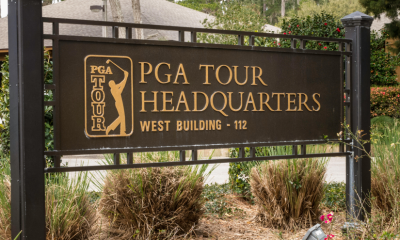

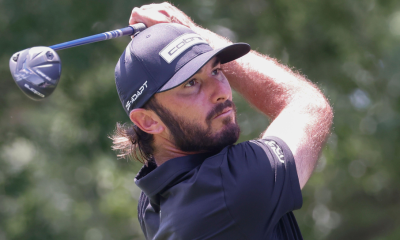





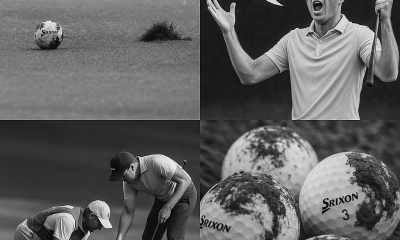

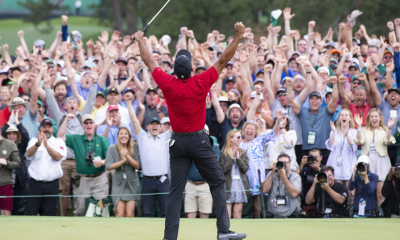









Jim Rebey
Apr 4, 2025 at 1:14 pm
It’s not just about score, it’s about sustainability. Longer, thicker rough requires more water which is getting scarcer and costlier. Longer, thicker rough slows play, what i believe is the biggest problem in golf. Keeping golf affordable for everyone is what grows the game. Making all skills important for scoring not just bombing and gouging makes golf fun, just my two cents worth.
Jim Rebey
Apr 4, 2025 at 1:49 pm
They need to roll back driver size for the pros also, no more than 300cc. There have always been big hitters but they had to be judicious when to go for it. Most sports tighten their rules for pros.
joeconn
Mar 11, 2025 at 9:14 am
Rollback or no rollback, the longer hitters are still going to be the longer hitters, on the pro tour or in my group at home. If I normally hit a wedge into a certain hole and my partner normally hits an 8 iron in, the rollback just means I’m now going to hit 8 or 9 iron and he’ll hit 6 or 7 iron.
Evan
Mar 11, 2025 at 5:31 am
Good article Brendon! Having been in the game for many years, distance absolutely isn’t the big issue – it’s accuracy. The current ball flies further for sure (but not really any further than the original Prov1 20 years ago), BUT it also goes much, much STRAIGHTER! At the same time, when I play courses I remember from decades ago, they’re much easier off the tee – rough cut back (and what rough there is is maintained) and generally wider fairways- I know largely for pace of play/commercial reasons. So young players now are consistently presented with longer courses, but they’re more open AND they’re using a ball that doesn’t want to curve! So the game has become SMASH IT as harder as you can and then play from there.
Nick
Mar 10, 2025 at 4:32 pm
I opened this article with skepticism, thinking “there’s no way this argument could convince me the roll back is bad” and you know what? I was right. Good work me.
mike
Mar 10, 2025 at 3:21 pm
the lets just have all championship golf courses redesigned and changed instead of just updating the ball to reflect better players and equipment.
as well the USGA and R&A reviewed all these alternative options, there is a literal report where they talk about all this, maybe Brendon should give it a read.
how about golf courses have a challenge for the best players in the world that isnt knee high hack it out rough, as that tight fairways and long rough have continued to just favour the longest hitters. been studied already, if fairways are smaller then more players will miss, the shorter hitter will now havea longer appraoch just from rough. the most accurate players on tour hits 72% of fairways, the average is 60%. rory was over 326 average last year vs average of almost 300 yds. much bigger dispersion between distance vs accuracy.
Old Joe
Mar 10, 2025 at 3:02 pm
Cutting fairways from green to tee at tour events will do far more than ball rollback. Seeing PGA Tour drives get 40-50 yards of roll out (like at last week’s Arnold Palmer), sometimes into the wind, is ridiculous. Water the damn fairways, like at the courses we mere mortals play, since they are already watering the rough.
I know for a fact that LPGA and PGA Champions mow in the direction of the green to increase yardage off tee (to sell sponsors’ drivers?).
AND deepen the dimples to increase drag and spin, bringing back shot shaping and making.
And roll back pros’ driver size. Ball striking should be a skill for the elite. This would offset the bomb and gouge strategery.
There is no question launch monitors, nutrition, strength and conditioning, not to mention evolution or the attraction of gifted athletes to the money and lifestyle of professional golf. So yes, freeze the ball at current specs. The PGA guys are already hitting wedges 160 yards and 6 irons 220. They don’t need anymore distance.
Send it!
Mar 10, 2025 at 2:23 pm
I agree. I’d add: the sand in the bunkers could be more inconsistent. I find most all televised tournaments to be too perfect and not resembling what the masses have to contend with. Watching a pro hit out of 5 inch rough – especially close to the green is much more interesting than perfect lies. Keeping the status quo with golf balls so that further distance improvements are negated.
M. Coz
Mar 10, 2025 at 2:21 pm
This Rollback is not helpful in growing the game. I believe in narrowing the fairways and smaller greens. I grew up with little greens and it made one learn the short game or fail. Accuracy was the most important part of golf. With the professionals spending more time on their bodies, does anyone think that will change? In ten years or less the strengthening will continue, and they will gain back the yardage while the rest of us stay the same. What will they do then? Roll it back more??? Change something else? Many of us good amateurs have developed “feel” and that is a big part of the game. What do we then do, have to relearn the feel all over again? We can’t just look at a play making shot anymore? we have to then spend a lot of time relearning how to make a “play”? That doesn’t take a day, it could take years!!!
Nick
Mar 10, 2025 at 4:34 pm
Quit and play tennis.
Vas
Mar 10, 2025 at 1:32 pm
Disagree completely. I live 15 minutes from Merion, and what they played in 2013 was not Merion. Growing up when US Opens meant wedging the ball out of nightmarish rough, I can assure you that no one wants to watch that mess. The rollback is too little and too late. They should have capped ball tech with the Titleist Professionals, but now we’re WAY past that and grasping at straws. Only the golf powers that be would rather make million dollar changes to classic golf courses instead of changing a $5 golf ball.
84425
Mar 10, 2025 at 8:31 am
Great take: there is no reason to roll back the ball because i could find 1 (one) instance in the past 15 (fifteen) years where distance was not the issue. Really?
The Author of this article is an idiot
Mar 9, 2025 at 10:48 am
Horrible take. You should be banned from writing for 90 days.
Nick
Mar 10, 2025 at 4:34 pm
90 days isn’t long enough.
Square
Mar 8, 2025 at 1:06 pm
Rolling the golf ball back is stupid. Cap the distance on the current ball and move on. Simple. Why are we worried about the 1% of golfers who hit it that far and the rest of the 20 handicappers enjoy hitting it as far as they can?
Not
Mar 8, 2025 at 10:50 am
USGA is NOT the PGA Tour
Craig
Mar 7, 2025 at 11:53 pm
“narrow fairways that demanded precision off the tee, punishing rough that extracted a severe penalty for wayward drives”
No one wants to watch this kind of golf on TV every week, it’s boring golf. Haven’t you notice how terrible golf rates now?
Brent
Mar 10, 2025 at 11:21 am
Totally agree. Watching pros hack the ball out is boring.
Chuck
Mar 7, 2025 at 11:09 pm
Every single paragraph of this short essay is defective.
Brendon, I’d be happy to debate you on a public forum on all of this. For the record.
Are you game?
Anthony
Mar 7, 2025 at 2:09 pm
This article makes no sense. 2013 Merion was a great golf course. Therefore we should not roll the ball back.
In 2013, 13 players average over 300 yards per drive. The longest being 306. In 2025, 116 players average over 300 yards per drive. The longest being 326.
The logical conclusion to this article should be: 2013 Merion was a great golf course. Therefore we SHOULD roll the ball back.
BD57
Mar 7, 2025 at 11:46 am
I agree.
The only time of the year I really care about “course setup” is at majors. Regular tour events, it’s not so important (IMO).
The game’s going to get appreciably harder for the masses when the new ball regs kick in. USGA and R&A will need to adjust their course rating / slope regimen entirely or courses will have to become shorter for “the rest of us.”
It will be dispiriting for a lot of folks when they see how much shorter they are – not exactly what you want when you’re trying to grow the game.
Anthony
Mar 7, 2025 at 3:01 pm
The new ball will have essentially no impact on the masses. The USGA expects less than 5 yard impact to <100 mph swing speeds.
On the PGA Tour they expect a 10 yard impact. The 2025 average drive is 303. You would have to go alllll the way back to 2019 to get to an average drive of 293. If the USGA is horribly wrong by 50% and the roll back actually has a 15 yard impact you would have to go alllll the way back to 2014 to get an average drive of 288.
The hyperbole around the rollback is completely detached from the intent and expectations of what is going to happen.
Chuck
Mar 9, 2025 at 3:23 pm
“The masses” don’t even play with premium urethane balls!
They are buying less-expensive ionomer, surlyn (and other) balls. And why not? They spin less and are easier for recreational players to keep them on the golf course. Most recreational players woud be wasting their money on premium balls. We could limit the ball rollback to urethane balls and most recreational golfers might never know.
geohogan
Mar 13, 2025 at 11:32 am
Snell offer low price, two piece balls with urethane covers . .. thank you very much.
hollabachgt
Mar 7, 2025 at 11:09 am
“The USGA employed several tactical elements: narrow fairways that demanded precision off the tee, punishing rough that extracted a severe penalty for wayward drives, smaller greens that rewarded accurate approach shots, and strategic pin placements that required both skill and patience.”
Couldn’t the same have been said about Winged Foot in 2020? A tournament in which 2 of the longest players in the game found a clear advantage over the rest of the field.
Eric
Mar 7, 2025 at 12:09 pm
Played over 7,400 yards though, so would tend to favor a longer hitter regardless of setup. Plus Zach Johnson and Webb Simpson finished top 10.
Nick
Mar 10, 2025 at 4:37 pm
*12 shots behind the winner*